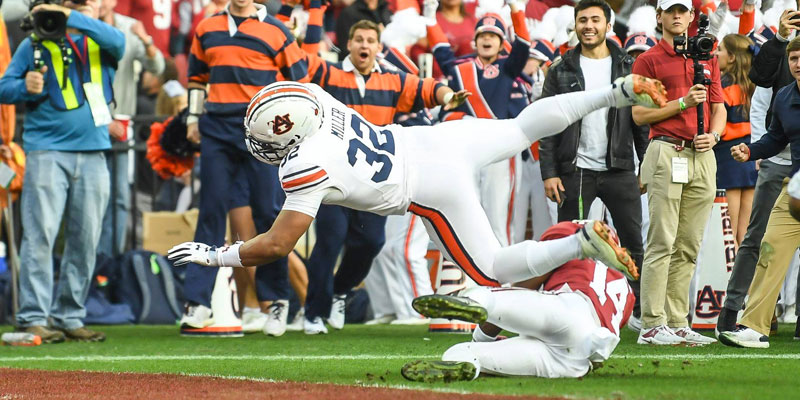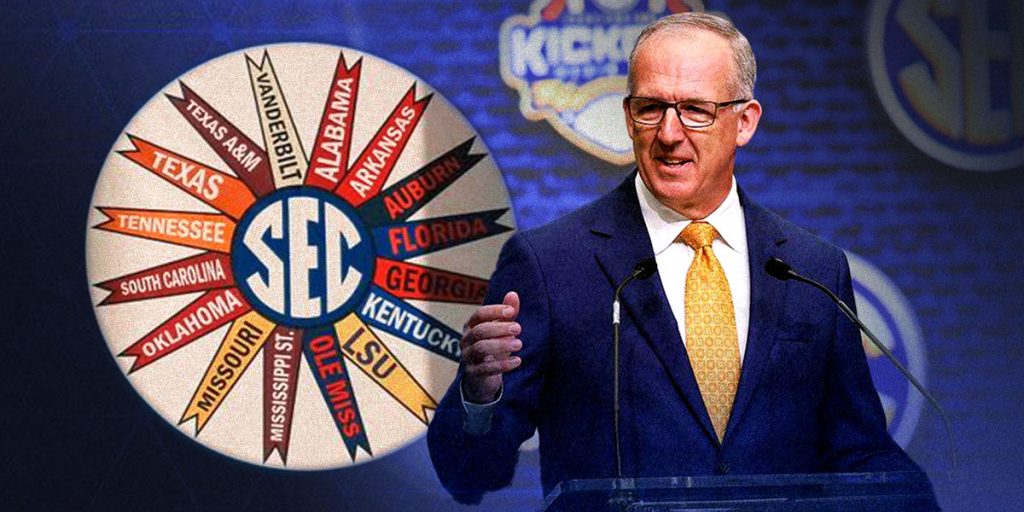News of traumatic brain injuries and suicides among professional and college football players has made many question the violent nature of the game. Rule changes, such as the NCAA’s targeting rule, have been imposed to promote player safety, and yet concussions continue to occur.
Using Auburn University’s functional magnetic resonance imaging or fMRI machine to study the brain functions of college football fans and non-football fans when they were exposed to violent imagery, a team of researchers suspect additional regulations that improve player safety and make the game less violent could affect fandom.
Auburn Associate Professor David Martin in the Department of Nutrition, Dietetics and Hospitality Management posed it as such: “If we have fans who are attracted to the violence aspect of the sport and we start to sanitize it to make it safer for the players, at what point do we start to lose fans?”
The team of researchers in electrical engineering, psychology, psychiatry and hospitality found fans to be less empathic to violence in the game and violence in general than nonfans.
“This finding does not demonstrate that football enthusiasts are more prone to violence or less sensitive to violent imagery, but instead, that violence within the context of football may provide less affective arousal compared to general violence,” the study reads.
While social and behavioral effects of violence in movies and video games have been studied extensively, much less is known about how sports affect perceptions of violence.
Areas of the brain that indicate emotion regulation, perception of others’ pain and the nerve origin of violent behavior were less active in football fans, according to the study, published in Frontiers in Public Health. This decreased empathetic response and perhaps altered behavioral responses in otherwise healthy people are often associated with increased or repeated exposure to violence.
With rising concerns over players’ health — such as the correlation between repetitive brain trauma and incidents of chronic traumatic encephalopathy, or CTE, depression and suicidal risk — recent rule changes have been imposed to increase player safety. For instance, the NCAA instituted the targeting rule in 2013 that calls for a player to be ejected if he makes contact with a defenseless opponent above the shoulders. The National Football League adopted the NCAA’s rule in 2017.
Brain trauma is an issue for professional athletes, as well as youth football players, who may also be exposed to large numbers of repetitive head collisions. Therefore, concussions and sub-concussive blows to the head commonly found in football can be considered an urgent public health burden that requires a policy response either from the government or the sporting body.
So far, the NCAA targeting rule has been met with marginal resistance from football fans.
However, the research team found previous research that said fans find the most enjoyment in the unscripted, on-the-field violence of college football. Previous studies also indicated violence in sport to have a socio-cultural impact, meaning the exposure to violence and aggression makes sports fans more prone to acts of violence. Their impulsive behaviors may result in destructive acts of violence and their muted perceptions of pain may increase suicidal risk.
Martin’s own research also examines the consumer behavior side of college football.
“This issue of traumatic brain injury has really driven the changes that are happening in the world of sports,” he said. “I’m interested in what happens to Auburn University and the city of Auburn, or any college town, if college football gets regulated away.
“We know that when college football does well, corporate sponsorships increase, undergraduate applications increase and alumni support increases. So the success of football is very much tied to the success of the university as a whole. If football were to go away or if it were to change so dramatically that alumni and fan support is lessened, that has huge economic implications for the university, the city and the country.”
Regulations limiting the game of football may not be far off as researchers across the country are working on a non-evasive way to diagnose CTE. Currently, the only way to detect it is a post-mortem autopsy. Once the new testing method is available, Martin said youth, high school, college and professional football players can be tested and researchers will know, “with a high degree of certainty, what percentage of those players will have permanent brain damage.”
“To me, that will be a very important day,” he said. “I don’t know what the percentage has to be for there to be a major change in football, but it will either regulate the game out of existence or people just won’t play it anymore.”
The study was conducted by Martin, Electrical Engineering Associate Professor Gopi Deshpande and Psychology Professor Jeffrey Katz from Auburn; Psychology Assistant Professor Thomas Daniel from Westfield State University in Westfield, Massachusetts; Kyle M. Townsend, clinical assistant professor of hospitality at Georgia State University in Atlanta; and Postdoctoral Research Fellow Yun Wang at Columbia University in New York.
This story originally appeared on Auburn University’s website.
(Courtesy of Alabama NewsCenter)












